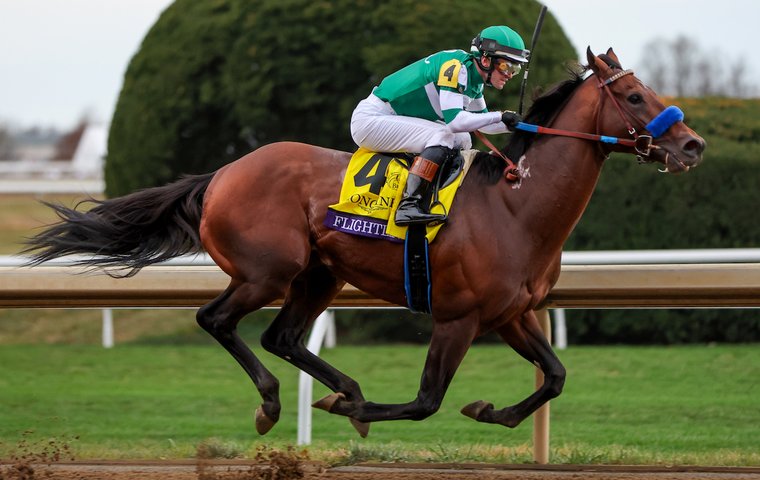
Unbeaten Breeders’ Cup Classic winner Flightline is sure to be named Horse of the Year as the annual Eclipse Awards ceremony on Thursday. Here’s Jay Hovdey with an appreciation of a truly sublime talent.
‘Sometimes legends make reality, and become more useful than the facts’ – Salman Rushdie
As legends go, it is hard to beat the stories spun around the horse named Incitatus, the favored steed belonging to the Roman emperor Caligula.
Incitatus supposedly lived in a stall made of marble, ate from an ivory manger, and was cloaked between races in a blanket encrusted with jewels. His owner, by reputation not a very nice person, melted when in the company of his horse and at one point considered adding Incitatus to his ruling government.
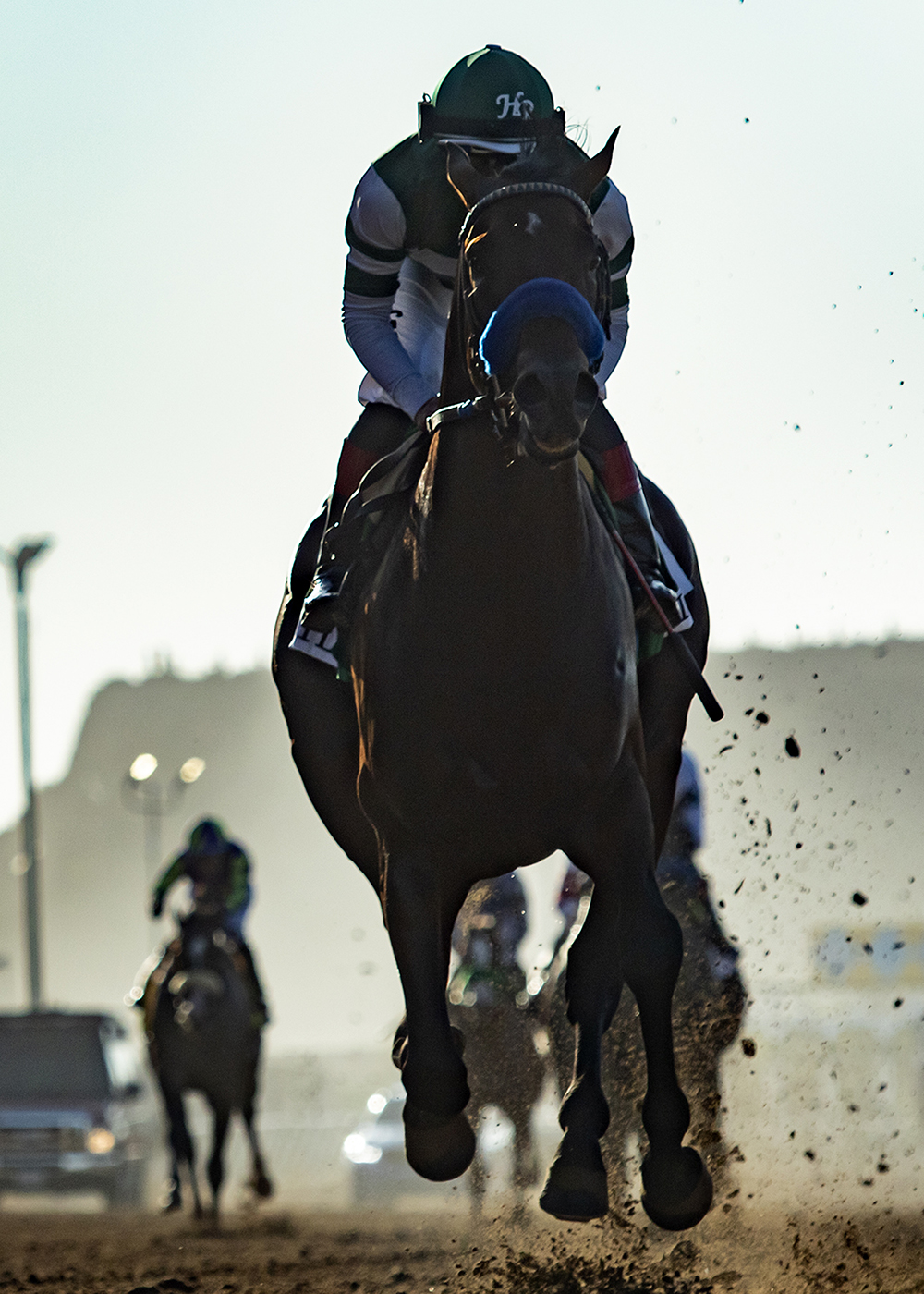 Then there was Marengo, a diminutive gray Arab, who was pressed into service as Napoleon’s mount during the French ruler’s conquest of Europe. The horse received his name after their first great battle together, then fought on until Waterloo, where Napoleon met his match and his comrade was badly wounded. Marengo was rescued by a victorious British officer, hailed as a hero in England, and lived to be 38.
Then there was Marengo, a diminutive gray Arab, who was pressed into service as Napoleon’s mount during the French ruler’s conquest of Europe. The horse received his name after their first great battle together, then fought on until Waterloo, where Napoleon met his match and his comrade was badly wounded. Marengo was rescued by a victorious British officer, hailed as a hero in England, and lived to be 38.
History is replete with such beasts, larger in popular lore than the lives they probably led. In death, El Cid was strapped to his white stallion Babieca and terrified the attacking Saracens into retreat.
Alexander the Great tamed fierce Bucephalus as a young boy and together they conquered the known world. Gen. Ulysses S. Grant was so protective of his favored battle mount, the Thoroughbred Cincinnati, that he allowed only one other person to ride the chestnut son of Lexington: President Abraham Lincoln.
Vibrant talent
Now comes Flightline, a Halley’s Comet of a racehorse, a Thoroughbred of such vibrant talent that his lack of a long, comprehensive racing career over several seasons serves only to enhance his legendary aura.
Years from now, as racing fans gather around their digital campfires, Flightline’s winning margins will grow. The number of those who saw him in the flesh will rise into the millions. There will be children’s books hailing Flightline as a superhero who came and went with a miraculous whoosh, leaving only the streak of his disappearing dark tail as a souvenir.
Based upon the manner in which Flightline separated himself from his stunned opposition, six times in six races, it stands to reason that those who wanted to see more would have simply seen more of the same. Such honest greed is understandable. It is the nature of the human heart to always long for extra helpings of a good thing. Who among us did not clamor for The Godfather Part III, Rocky 4, or Police Academy 5, 6, and 7?
Flightline had three starts in calendar year 2022. Those three starts were deemed sufficient to justify his lofty evaluation not only by the metrics of the Longines World’s Best Racehorse competition – for which Flightline’s people were celebrated in London on Jan. 17 – but also in the Thoroughbred Racing Commentary’s Global Rankings, which have placed him firmly on top of the heap for the foreseeable future.
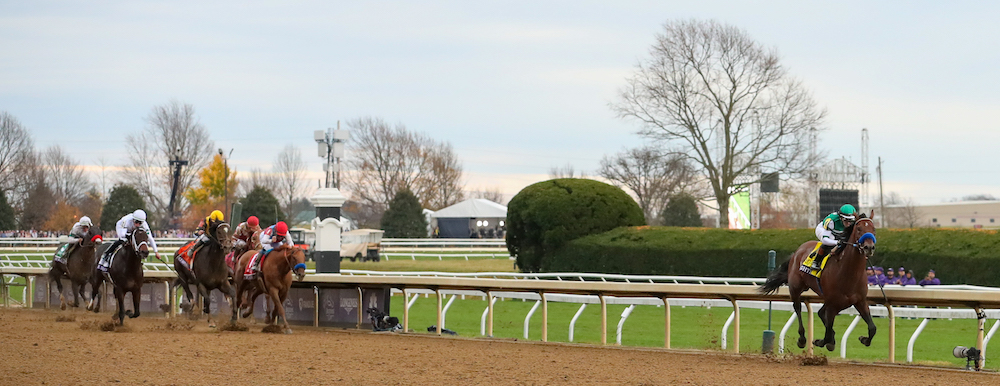 Then, on the night of Thursday, Jan. 26, amidst the daunting wealth of Florida’s Palm Beach, Flightline will be hailed as the Eclipse Awards 2022 Horse of the Year, affirming a title he clinched somewhere around the Del Mar quarter pole on his way to a 19¼-length masterpiece in the mile-and-a-quarter Pacific Classic last September.
Then, on the night of Thursday, Jan. 26, amidst the daunting wealth of Florida’s Palm Beach, Flightline will be hailed as the Eclipse Awards 2022 Horse of the Year, affirming a title he clinched somewhere around the Del Mar quarter pole on his way to a 19¼-length masterpiece in the mile-and-a-quarter Pacific Classic last September.
A night at the opera
With so few opportunities to witness Flightline in action, each appearance took on the air of a night at the opera, or an afternoon browsing the Louvre. The lopsided outcome was expected. Only the degree of domination, the nature of his flamboyance, would be held in excited anticipation.
He broke slowly in the Metropolitan Handicap, was briefly blocked, and then had to alter course before winning by six. In the Pacific Classic, he toyed with the Dubai World Cup hero Country Grammer before leaving him – along with any semblance of reality – far, far behind. In the Breeders’ Cup Classic, its field brimming with quality merchandise, Flightline indulged the admirable Life Is Good for a mile, then bade both the competition and his fans a spectacular farewell.
Three starts was a tough pill to swallow for some hardbound traditionalists, who rail at the fact that the number of starts made by the Eclipse Horse of the Year has been trending downward through the decades. The most recent Horse of the Year with starts in double figures was Charismatic, in 1999, a dual Classic winner whose 10 outings also included a $62,500 claiming event.
Since then, the average number of starts for a Horse of the Year has hovered at seven, ranging from Ghostzapper’s flurry of four shining races in 2004 to the nine starts logged by Tiznow, Azeri, Mineshaft, and – in the first of their two title seasons – Curlin, and California Chrome.
The only other champion to be knighted a US Horse of the Year on the evidence of only three starts was Native Dancer, in 1954, under circumstances that have very little to do with today’s sensibilities. On the evidence of 19 previous races, the gray son of Polynesian already was fully exposed as a superior animal.
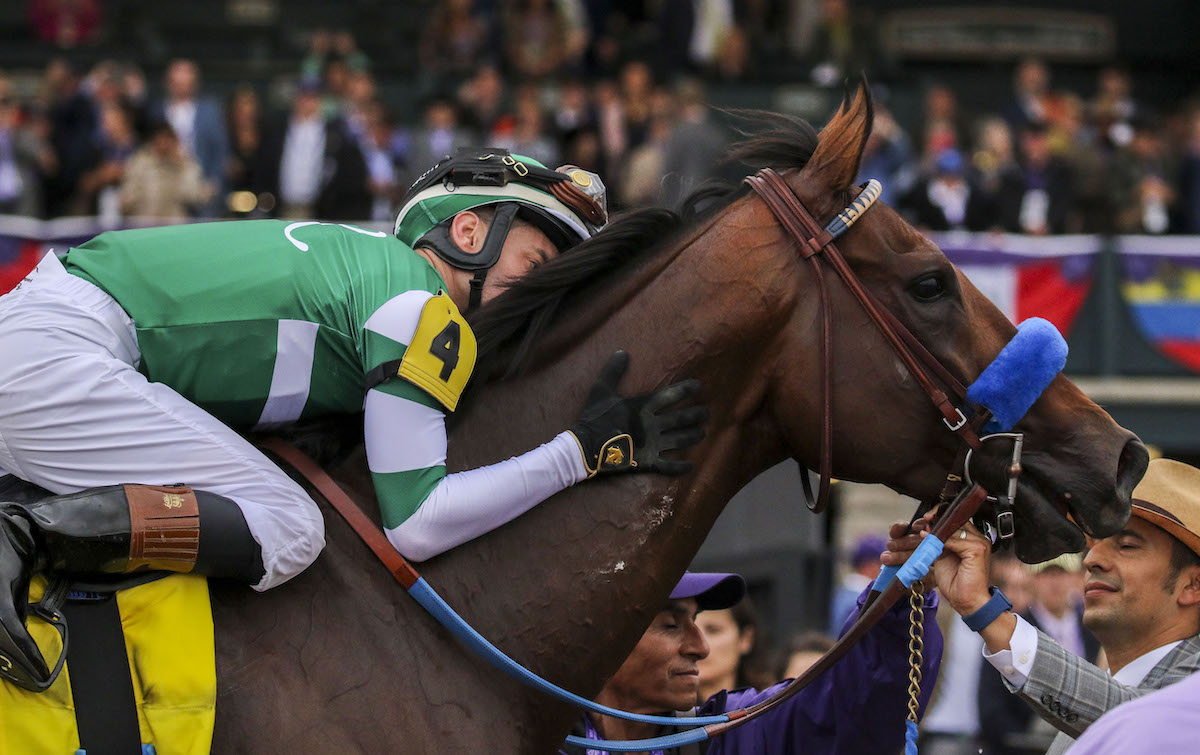
Owed a consolation
The feeling was, Native Dancer was owed a consolation and needed only to show up in 1954 and take a few bows to win the title. That’s pretty much what happened. He commenced with an efficient win in a sprint at Belmont that set him up for a narrow, thrilling score in the Metropolitan Handicap under 130 pounds.
Foot trouble ensued, but he returned in style at Saratoga to win a minor handicap carrying 137. Then the foot flared again, and Native Dancer was retired, a winner of 21 races from 22 starts.
There will be a few holdouts preventing Flightline from a unanimous decision as Horse of the Year, but not many. Native Dancer, on the other hand, was far from a consensus choice after his slim 1954 campaign. He received 38 votes in the combined Racing Form and TRA polls, while three-year-old High Gun collected a respectable 22. Three starts was so far from the norm for a Horse of the Year that establishment voters likely were convinced it would never happen again, if ever.
Now it has, 68 years later, which in this case qualifies as the fullness of time. John Sadler, who shaped Flightline’s career, understood early the responsibility of training such a formidable talent.
Outside the norms
As much as he respected the historical measures of greatness, Sadler had trained enough very good horses to recognize his colt as 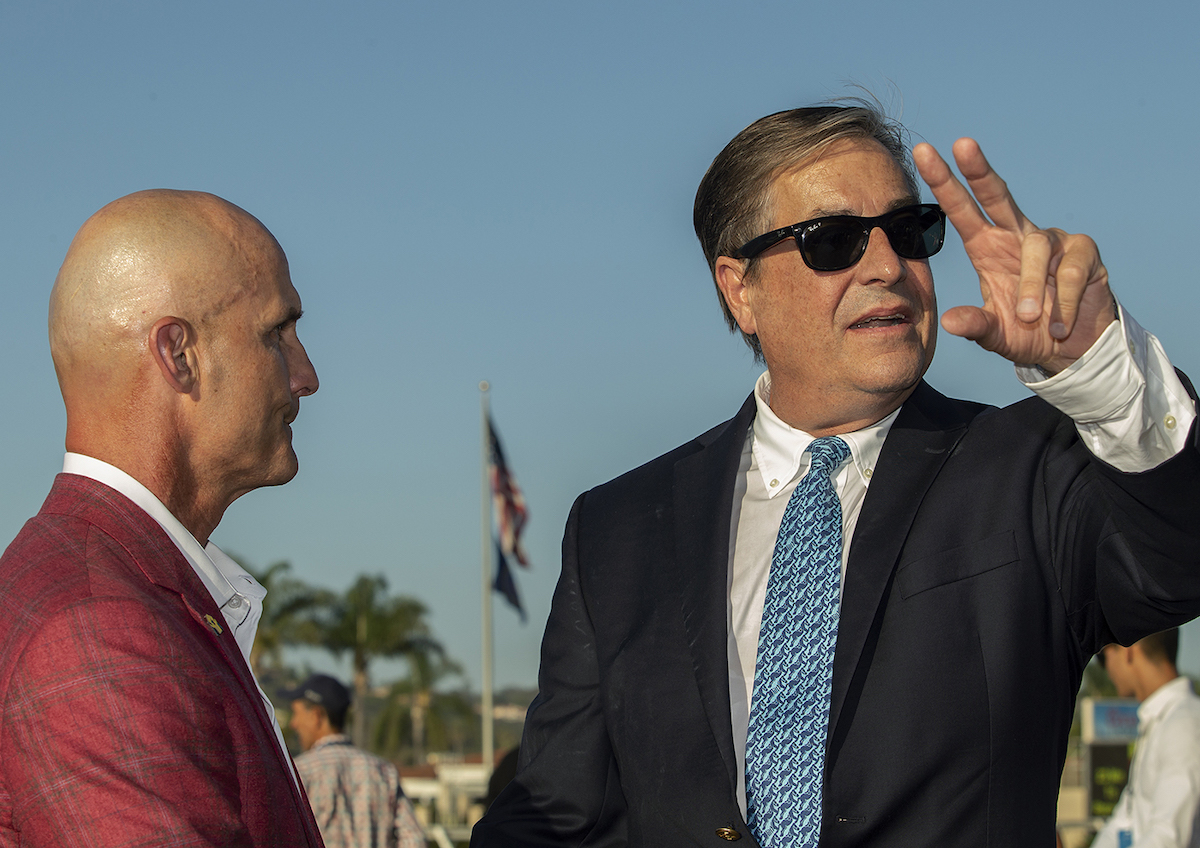 existing outside the norms and treated him accordingly. So, when Flightline sustained a quarter crack, Sadler listened to his farrier and let the hoof sufficiently heal.
existing outside the norms and treated him accordingly. So, when Flightline sustained a quarter crack, Sadler listened to his farrier and let the hoof sufficiently heal.
When the colt came up with a hot hock, he deferred to the diagnosis then let him walk, jog, and gallop longer than prescribed. Sadler kept his own council, muffled from the madding crowd, and produced Flightline only when the tank was full to bursting.
Flightline was foaled in Kentucky, sold in New York, broken in Florida, and trained in California, where those of us who lived in his shadow had joyful access to the ongoing adventure.
However, once his 11½-length Malibu Stakes victory was in the books, coming at the end of his three-year-old season, we knew he had become a Thoroughbred of grand scale to be shared whenever possible, while on his way to a place in history saved for a precious few.
It is fitting that Flightline’s Eclipse Awards coronation will escape the confines of the hosting racetracks over the last several years and return to ‘black-tie’ status instead of the semi-formal presentations that gave the evenings a come-as-you-are atmosphere. Those recent celebrations have been far distant cousins of the dinner’s handsome debut at the Waldorf Astoria Hotel in the Manhattan of 1972, and Flightline is definitely a tux-and -tails kind of racehorse. The event will be held at The Breakers, a Palm Beach resort hotel of historic flair built in 1926 and presumably renovated a few times since then. I’m told there is Wi-Fi.
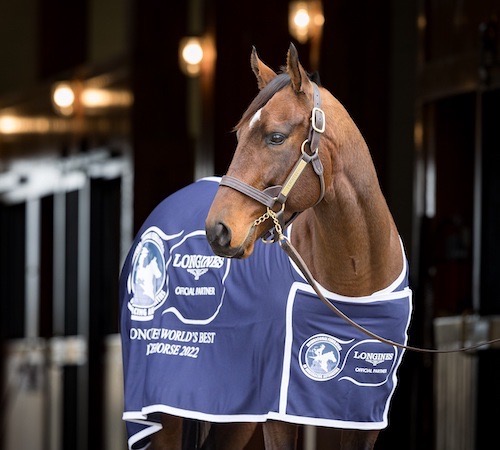 At the end of the evening, the golden statue will be cradled by members of the Flightline partnership – the Hronis Racing family, Terry Finley and his West Point syndicate, Anthony Mangaro’s Sienna Farm, Bill Farish of Woodford Racing, and Flightline’s breeder, Jane Lyon, of Summer Wind Farm.
At the end of the evening, the golden statue will be cradled by members of the Flightline partnership – the Hronis Racing family, Terry Finley and his West Point syndicate, Anthony Mangaro’s Sienna Farm, Bill Farish of Woodford Racing, and Flightline’s breeder, Jane Lyon, of Summer Wind Farm.
Afterwards, the question will hover, pointless in its impossible resolution. Given his brief exposure, running in stakes always rated Grade 1, where does Flightline belong among the ranks of the greatest Thoroughbreds?
Nothing to express but graditude
Those of us who brushed close to the remarkable champion harbor a deep and indelible prejudice. (“Come on in, get a good look,” Sadler said one day, inviting me into the stall.)
We have seen none better, in those few moments he performed for our pleasure, oblivious to the idea of mundane competition. In the end, pressed among the Breeders’ Cup crowd at Keeneland as Flightline and Flavien Prat fulfilled their promise, there was nothing left to express but gratitude for one last chance to breath the same air.
“It was like the last act on a set stage,” William Faulkner wrote in Go Down, Moses. “It was the beginning of the end of something, he didn't know what except that he would not grieve. He would be humble and proud that he had been found worthy to be a part of it too or even just to see it too.”
• Read Jay Hovdey's Favorite Racehorses series
‘Flightline was a remarkable horse, a blessing’ – trainer John Sadler on the world champion
Flightline: ‘The best I will ever ride’ says Flavien Prat – and there could be even more to come
‘Frankel might be the equivalent’ - focus on Flightline, the ‘once-in-a-generation’ horse
View the latest TRC Global Rankings for horses / jockeys / trainers / sires


